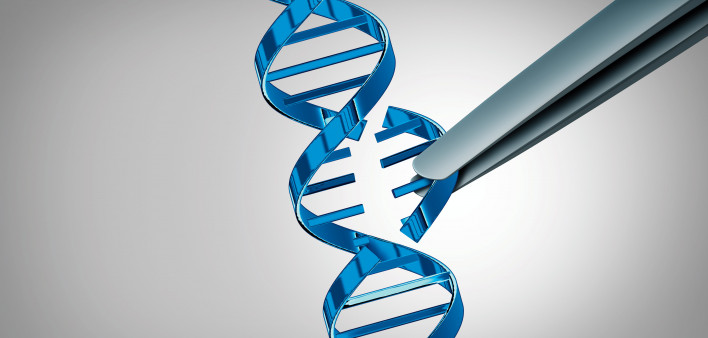Three research teams investigating HIV cures received a total of nearly $600,000 in grants from amfAR, The Foundation for AIDS Research. All three groups are exploring cutting-edge gene therapies as a possible way to eradicate the HIV reservoir and cure HIV.
The HIV reservoir is one of the main obstacles to curing HIV. The term refers to virus that hides in latent cells in lymph nodes and other locations. HIV meds can’t reach this virus because it’s not actively replicating, but in the absence of antiretrovirals in the body, HIV in the reservoir can begin making new virus that replicates and circulates, causing destruction.
“Gene therapy strategies hold tremendous potential for curing HIV, but we must walk the fine line between optimizing this highly technical approach and making it feasible around the world,” said amfAR vice president and director of research Rowena Johnston, PhD, in an amfAR press release. “These new awards should get us closer to unleashing the full power of gene therapy against HIV.”
Learn more about the innovative #genetherapy research #amfAR is funding: https://t.co/rX2DnTqDQn pic.twitter.com/rhejtVCHfV
— amfAR (@amfAR) August 10, 2021
Here’s a look at the approaches the research teams hope will eliminate the HIV reservoir.
CAR-T CELLS
The Food and Drug Administration first approved CAR-T therapy—which stands for chimeric antigen receptor T-cell therapy—in 2017. A part of the body’s immune system, T cells are white blood cells that attack foreign substances. CAR-T therapy is used to treat some forms of cancer, but as POZ’s sister publication Cancer Health has reported, it hasn’t been commonly used because it is expensive and must be custom made for each patient.
In the case of cancer treatment, CAR-T therapy involves taking a patient’s T cells and sending them to a lab where they are genetically modified to recognize and attack the cancer. The resulting cells are then infused back into the individual after the person has received strong chemotherapy to kill off some of their existing immune cells to make room for the new ones.
When applied to HIV treatment, CAR-T therapy has been less successful because the resulting cells are vulnerable to HIV infection. The amfAR grant will help a team of researchers explore a way to get around this problem—and to do so in a manner that’s much cheaper than the cancer therapy. Scientists led by Anastasios Karadimitris, PhD, MRCP, FRCPath, of Imperial College in London, will combine CAR-T therapy with another type of cell found in the immune system: invariant natural killer T cells, or iNKT cells. Unlike the T cells used in the cancer therapy, these cells are more resistant to HIV. Another advantage is that they’re more uniform throughout the human population, which means that, hopefully, the resulting HIV treatment would not need be customized for each patient.
In related news, last summer the National Institutes of Health awarded a grant to a group of HIV scientists developing and studying CAR-T therapies. For more, see “$14M Federal Grant to Research CAR-T Gene Therapy to Cure HIV.”
Broadly Functional Antibodies, bFAbs
These types of antibodies show an exceptional ability to bind to infected cells and mark them to be destroyed by other parts of the immune system, such as natural killer T cells. bFAbs were identified by a group of researchers led by Todd Allen, PhD, of the Ragon Institute of Massachusetts General Hospital, MIT and Harvard. With amfAR funding, the researchers will test bFAbs alone as well as with genetically engineered CAR-T cells, in the hope that the antibodies and CAR-T cells will be able to target and help destroy only cells infected with HIV. The experiments will be conducted on mice with human immune cells.
CRISPR/Cas9 Gene Editing Technology
Late last year, hopeful headlines announced that the CRISPR-Cas9 gene editing tool successfully snipped simian HIV from monkey’s cells, including from the viral reservoir. CRISPR (clustered regularly interspaced short palindromic repeats) technology allows scientists to remove or alter specific bits of DNA using the Cas9 protein, an enzyme that cuts the DNA. In this case, it’s used to remove HIV that has inserted itself into a person’s or monkey’s DNA.
The idea is straightforward, but the reality is more complicated, in part because areas of the genome (a collection of all our genes, or DNA) are tightly wound and hard for CRISPR to access. New research shows that HIV might be integrated into these hard-to-reach areas. A team of scientists led by Jori Symons, PhD, of University Medical Center Utrecht in the Netherlands, will explore this possibility in addition to drugs that might open up these areas of the genome so that CRISPR/Cas can access it.
“We’re pleased to be supporting this impressive trio of research teams that are bringing a range of smart, creative approaches to the challenge of curing HIV,” said amfAR CEO Kevin Robert Frost in the press release. “We hope these investments generate new insights that will help us develop a curative intervention for all people living with HIV.”
Since 1985, amfAR has awarded more than 3,300 grants to HIV researchers across the globe, totaling nearly $600 million. In 2010, the organization started the amfAR Research Consortium on HIV Eradication, or ARCHE, specifically to fund strategies to cure HIV as well as the “Countdown to a Cure for HIV/AIDS” initiative; in 2014, it launched the amfAR Institute for HIV Cure Research.
Last year, the group launched the amfAR Fund to Fight COVID-19. (Don’t worry: Money is not diverted from HIV research.) For an example of this funding, see “AIDS Group amfAR Awards Two Grants to Research COVID-19.” The article includes a video from a series exploring the intersection of the two diseases.
For more POZ articles about the organization, click the hashtag #amfAR, where you’ll find headlines like “Why Women Are a Vital Part of Cure Research [VIDEO]” and “Does the Coronavirus Affect the HIV Reservoir?”







Comments
Comments